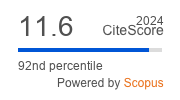GENDER IDENTIFICATION SYSTEM FOR CRIME SCENCE ANALYSIS USING FINGERPRINTS
DOI:
https://doi.org/10.29284/ijasis.3.2.2017.1-7Keywords:
Fingerprints, gender identification, Box-Cox transformation, Logistic regression classifierAbstract
Gender identification or classification is a challenging task in computer vision as the biometrics of male and female such as fingerprints, face, vein have many variations. Among the various biometrics, fingerprints are commonly available in a crime scene. In this, study, gender identification system for crime scene analysis using fingerprints is presented. Initially, the fingerprints are de-noised by median filter and Otsu thresholding is employed to binarize the fingerprints in the preprocessing stage. Then, the features are extracted by Box-Cox transformation method. Finally, the classification is made by logistic regression classifier. A better classification accuracy of 96% is achieved by the gender identification system using Box-Cox transformation and logistic regression classifier.
References
P. Goel, and S. Agarwal, Hybrid approach of haar cascade classifiers and geometrical properties of facial features applied to illumination invariant gender classification system, International Conference on Computing Sciences, 2012, pp. 132-136.
X. Han, H. Ugail, and I. Palmer, Gender classification based on 3D face geometry features using SVM, International Conference on CyberWorlds, 2012, pp. 114-118.
A. Bansal, R. Agarwal, and R.K, Sharma, SVM based gender classification using iris images, International Conference on Computational Intelligence and Communication Networks, 2012, pp. 425-429.
D.G. Rajesh, and M. Punithavalli, Wavelets and Gaussian mixture model approach for gender classification using fingerprints, International Conference on Current Trends In Engineering and Technology, 2014, pp. 522-525.
S.Z.A. Jalil, M.N. Taib, H.A. Idris, and M.M. Yunus, Gender classification based on human radiation wave analysis, International Conference on Computer Modelling and Simulation, 2011, pp. 59-63.
T. Jabid, M.H. Kabir, and O. Chae, Gender classification using local directional pattern (LDP), International Conference on Pattern Recognition, 2010, pp. 2162-2165.
H. Chen, and W. Wei, Pseudo-example based iterative svm learning approach for gender classification, World Congress on Intelligent Control and Automation, 2006, Vol. 2, pp. 9528-9532.
F. Grangeiro, R. Jesus, and N. Correia, Face recognition and gender classification in personal memories, International Conference on Acoustics, Speech and Signal Processing, 2009, pp. 1945-1948.
A. Mirza, M. Moetesum, I. Siddiqi, and C. Djeddi, Gender classification from offline handwriting images using textural features, International Conference on Frontiers in Handwriting Recognition, 2016, pp. 395-398.
W. Chuan-xu, L. Yun, and L. Zuo-yong, Algorithm research of face image gender classification based on 2-d gabor wavelet transform and svm, International Symposium on Computer Science and Computational Technology, Vol. 1, 2008, pp. 312-315.
J.B. Ko, W. Lee, S.E. Choi, and J. Kim, A gender classification method using age information, International Conference on Electronics, Information and Communications, 2014, pp. 1-2.
P. Kalavathi, Brain tissue segmentation in MR brain images using multiple Otsu's thresholding technique, International Conference on Computer Science & Education, 2013, pp. 639-642.
R. Maciejewski, A. Pattath, S. Ko, R. Hafen, W.S. Cleveland, and D.S. Ebert, Automated box-cox transformations for improved visual encoding. IEEE transactions on visualization and computer graphics, Vol. 19, No. 1, 2012, pp. 130-140.
G. Renxiang, Z. Shiying, and L. Bao, Forecasting practice from Box-Cox transformation models, Journal of Systems Engineering and Electronics, Vol. 8, No. 3, 1997, pp. 27-33.
P. Li, S. Li, T. Bi, and Y. Liu, Telecom customer churn prediction method based on cluster stratified sampling logistic regression’, International Conference on Software Intelligence Technologies and Applications & International Conference on Frontiers of Internet of Things 2014, pp. 282-287.
J. Kim, J. Lee, C. Lee, E. Park, J. Kim, H. Kim, and H. Jeong, Optimal feature selection for pedestrian detection based on logistic regression analysis, International Conference on Systems, Man, and Cybernetics, 2013, pp. 239-242.
Downloads
Published
Issue
Section
License
This work is licensed under a Creative Commons Attribution 4.0 International License, which permits unrestricted use, distribution, and reproduction in any medium, provided the original work is properly cited.











